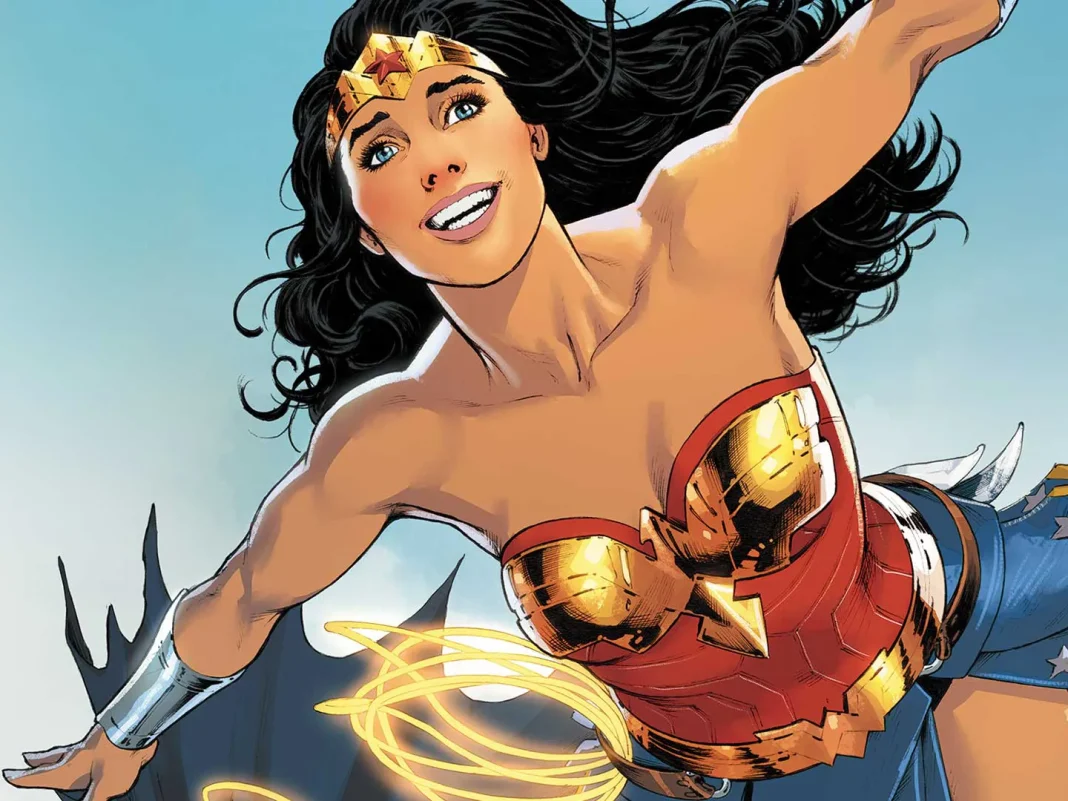In the realm of comic book heroines, Wonder Woman stands tall as the most iconic, captivating audiences for over eight decades. Her journey through the pages of DC Comics has witnessed numerous highs and lows, with creative teams shaping her narrative in unique ways. Today, we delve into the annals of Wonder Woman’s history, counting down the top creative runs that have etched her legacy into the fabric of comic book lore.
10. Wonder Woman (Vol.4) by Brian Azzarello and Cliff Chiang
In 2011, DC Comics ushered in the New 52 initiative, and Wonder Woman underwent a significant transformation under the pens of Brian Azzarello and artist Cliff Chiang. While the run received critical acclaim, it deviated from the character’s original essence, introducing a controversial origin story involving Zeus and Queen Hippolyta. Despite its departure from the classic Wonder Woman narrative, Azzarello’s reimagining of Olympian Gods added a layer of intrigue, showcasing impeccable craftsmanship.
9. The Legend of Wonder Woman by Kurt Busiek and Trina Robbins
Transporting us back to the mid-80s, Kurt Busiek and Trina Robbins crafted “The Legend of Wonder Woman,” a four-part mini-series that paid homage to the character’s Golden Age. Robbins’ art, reminiscent of the ’40s, brought Diana’s adventures to life, offering a nostalgic farewell to the Wonder Woman of old.
8. Wonder Woman (Vol.1) by Robert Kanigher and Ross Andru
The Silver Age dawned in the late ’50s, breathing new life into superhero comics, and Wonder Woman rode this wave of change. Robert Kanigher and Ross Andru’s run introduced imaginative and offbeat stories, featuring a revamped origin for Diana and the introduction of a “Wonder Family.” Despite its departure from the conventional, the run left an indelible mark on Wonder Woman’s lore.
7. Wonder Woman (Vol.2) by William Messner-Loebs and Mike Deodato
The ’90s brought a visually provocative take on Wonder Woman, courtesy of William Messner-Loebs and artist Mike Deodato. Though marred by a somewhat dated art style, the storytelling prowess prevailed, as Messner-Loebs delved into Diana’s struggles and introduced Artemis, a contender for the title of Wonder Woman. Despite its quirks, this run remains a testament to overcoming creative challenges.
6. Wonder Woman (Vol.3) by Gail Simone
In 2007, Gail Simone took the reins of Wonder Woman, delivering a run that, while not making sensational headlines, exemplified exceptional comic book storytelling. Simone’s tenure, the longest by a female writer, introduced compelling villains like the Circle and explored Diana’s relationships with other pantheons of Gods, showcasing her ability to weave intricate narratives.
5. Wonder Woman (Vol.2) by Phil Jimenez
Phil Jimenez, a devoted Wonder Woman fan, assumed the mantle in 2001, steering the character back to her roots. Jimenez’s exploration of Diana’s complex relationships, the dynamics of Themyscira, and the shared soul of Diana and Donna Troy resonated with fans. His magnum opus, “She’s a Wonder,” stands as one of the most poignant single issues in Wonder Woman’s history.
4. Wonder Woman: Earth One, Vol. 1-3, by Grant Morrison and Yanick Paquette
Grant Morrison and Yanick Paquette embarked on a bold journey with the “Wonder Woman: Earth One” graphic novel series. Delving into Wonder Woman’s sexuality and challenging societal norms, Morrison’s reinterpretation drew mixed reactions but undeniably left an indelible mark. The trilogy masterfully integrated elements from various eras, offering a modern take on the timeless character.
3. Wonder Woman and Sensation Comics by William Moulton Marston, Harry G. Peter, Elizabeth Marston, Olive Byrne
The Golden Age brought Wonder Woman to life under the guidance of her creator, William Moulton Marston, alongside Harry G. Peter, Elizabeth Marston, and Olive Byrne. Despite the era’s idiosyncrasies, these stories, infused with Amazonian super science and feminist ideals, remain surprisingly readable today. Marston’s vision, flawed yet revolutionary, laid the foundation for Wonder Woman’s enduring appeal.
2. Wonder Woman (Vol.2, Vol.5) by Greg Rucka
Greg Rucka, known for his prowess with Batman, undertook two remarkable runs on Wonder Woman. His initial tenure in 2004 focused on Diana’s role as an ambassador, emphasizing her impact on society. Rucka’s later return during the Rebirth era restored essential elements to Wonder Woman’s lore, addressing her origins and reimagining iconic villains. His nuanced portrayal showcased the multifaceted nature of the Amazing Amazon.
1. Wonder Woman (Vol.2) by George Perez
Topping our list is George Perez’s transformative run in 1986, following the Crisis on Infinite Earths reboot. Perez, with writer Greg Potter, redefined Wonder Woman’s mythos, elevating the Amazons to a grander scale and eliminating Diana’s secret identity. The intricate storytelling, coupled with Perez’s detailed artwork, propelled Wonder Woman into a new era of relevance and acclaim. Perez’s legacy endures as a cornerstone for subsequent creative endeavors, leaving an indelible mark on Wonder Woman’s character.
As we celebrate Wonder Woman’s rich history, these creative runs stand as testaments to the character’s enduring appeal and the diverse storytelling that has shaped her narrative over the years. From the Golden Age to the modern era, Wonder Woman continues to captivate audiences, her lasso of truth unravelling the complexities of heroism, feminism, and the indomitable spirit of Themyscira.


